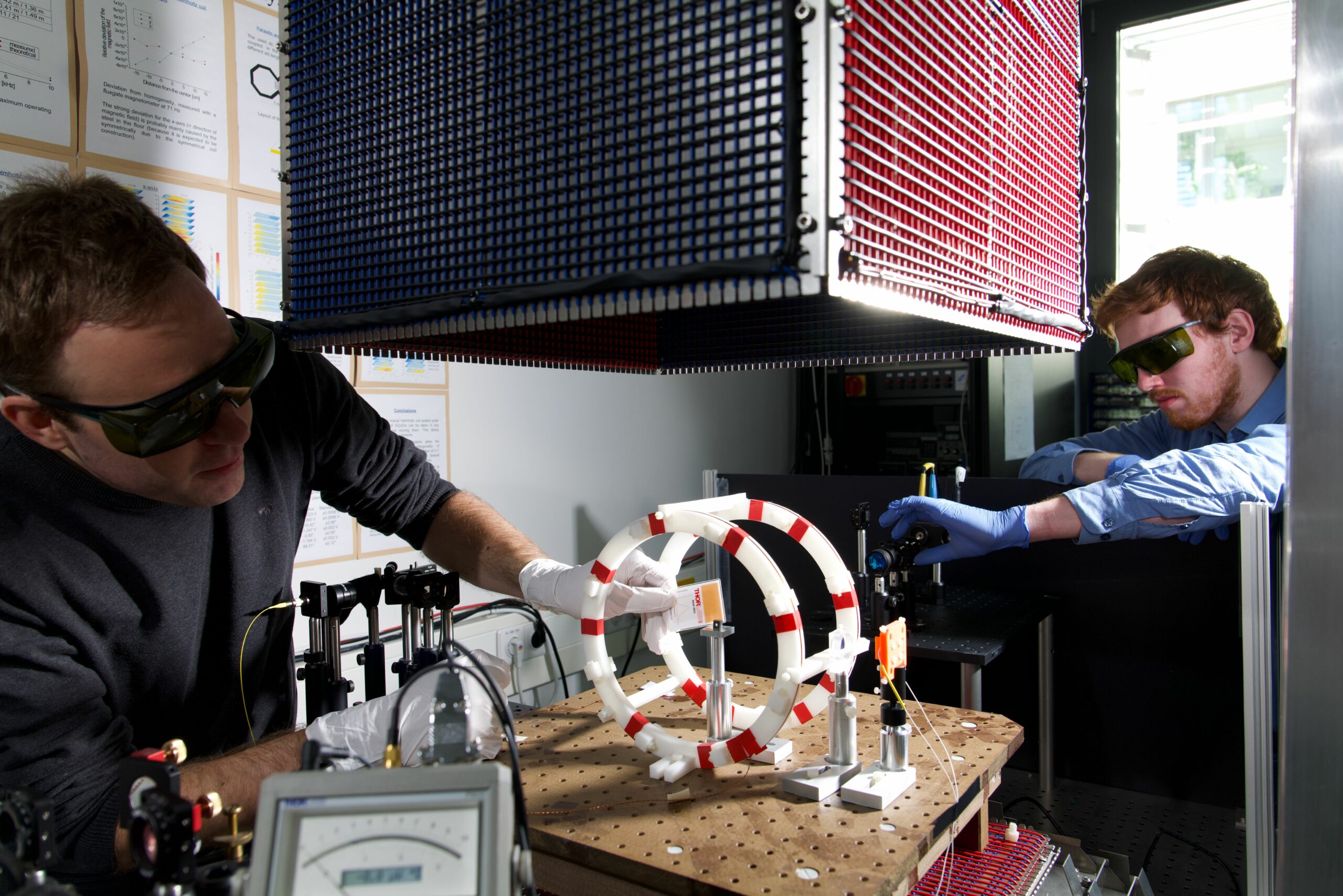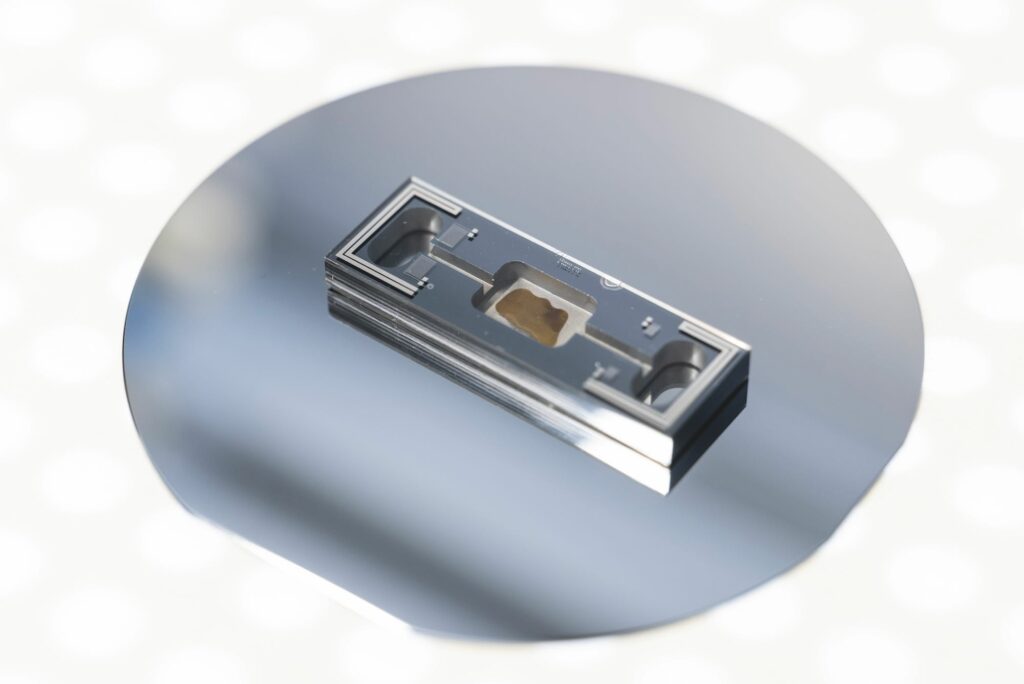- Home
- Research
- Quantum Systems
- Research results
- How optically pumped magnetometers make the weakest signals visible
How optically pumped magnetometers make the weakest signals visible

13.12.2022
For many, the smallest is often the greatest happiness: When couples are expecting a child, the anticipation of an exciting time in a new phase of life increases. This is often accompanied by uncertainties, namely whether the child’s heart is beating in the right rhythm. One way of examining the rhythm of the heartbeat from the outside while the baby is still in the mother’s womb is known as fetal magnetocardiography. This can provide information about the heart activity of the unborn child without pain or contact. The heartbeat of adults can also be measured quickly and easily using magnetocardiography. Thus, doctors can detect abnormalities that indicate pathological changes in the cardiac activity.
Optically pumped magnetometers for tiny biomagnetic signals
In the picture:
Microfabricated OPM cell array with central reservoir, two measurment volumes and integrated heater and temperature sensor structures in thin film technology.
At the heart of this diagnostic procedure are highly sensitive quantum sensors, in this case optically pumped magnetometers (OPMs), which can detect the smallest magnetic fields. Each contraction of the heart muscle is associated with electrical currents in the human body and thus with a magnetic field. OPMs are able to measure and visualize those very weak biomagnetic signals non-invasively. By using these sensors, cost-intensive use of commonly used superconducting sensors, so-called SQUID, with complex cooling by liquid helium or nitrogen, can be circumvented. This provides a broad range of application of this diagnostic method far beyond individual research institutions and special clinics.
Measuring heart and brain activity
Not only the human heart, but also the brain generates biomagnetic signals that are much smaller. The sources of brain activity can be mapped in three dimensions with OPM, for example, to study neuronal diseases such as epilepsy. In addition, OPM are also attractive for a number of other potential fields of application, such as magnetomyography, a method for studying nerve conduction, or for cancer research.
“In particular, miniaturized OPMs provide interesting possibilities in neurodiagnostics, as the sensors can be attached extremely flexibly to the head of affected individuals to measure neuronal activities. The head of a child, for example, is much smaller than that of an adult. Consequently, the sensors used for children must follow a different design than those used for adults. Measurement of the signals must always take place very close to the source, in this case the head, in order to provide meaning ful results. With small OPMs, such flexible arrangements can be realized very well,” explains Dr. Theo Scholtes, head of the Quantum Magnetometry Group at Leibniz IPHT, who is working intensively on the sensors.
His group researches and develops quantum sensors for biophotonic applications. “Our aim is to replace SQUID more and more by OPM in the future, as they overcome the disadvantages of superconducting sensors and do not require extremely cold temperatures for their use. At the same time, it is our vision to be able to do without magnetic shielding, which is necessary when using these highly sensitive magnetometers in order to exclude the earth’s magnetic field as well as technical interference factors from the measurement,” Theo Scholtes continues.
Good to know: How do optical magnetometers work?
OPMs are integrated optical devices that can spectroscopically measure the effect of an ambi ent magnetic field on an atomic vapor. The core is a cell with atomic vapor, which is microsystem-manufactured in the clean room of the Leibniz IPHT and filled with the element cesium. If the magnetic field surrounding the cell changes, this affects the optical properties of the atoms of the vapor, which are detected with laser light. The research group is investigating various aspects of OPM, including advantages and disadvantages of different readout principles, in order to customize them for use in a range of applications.
In the picture above:
Measurement setup for characterization of OPM cells and research of new readout methods.

